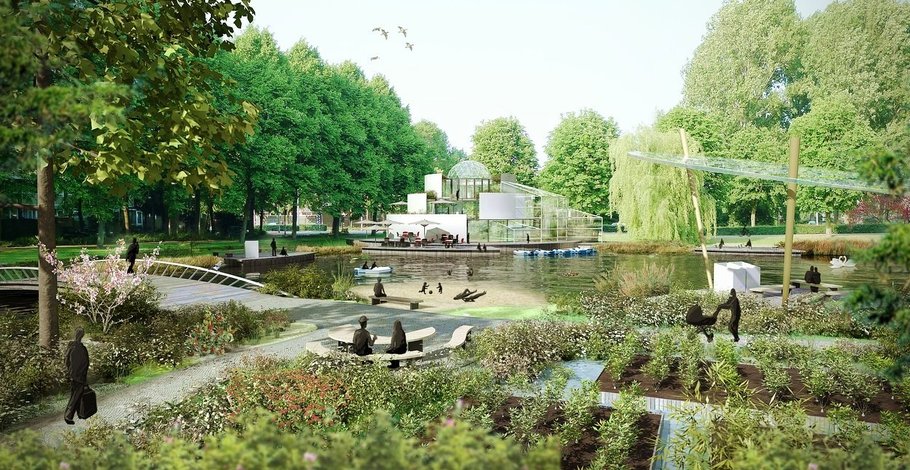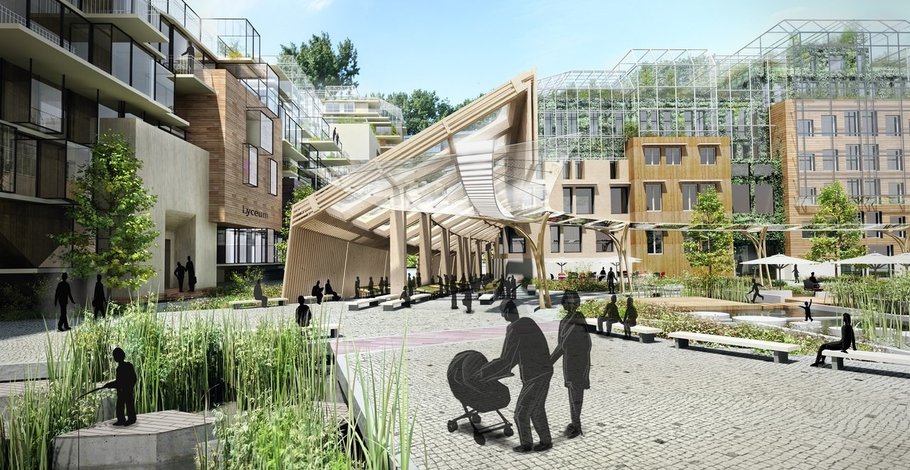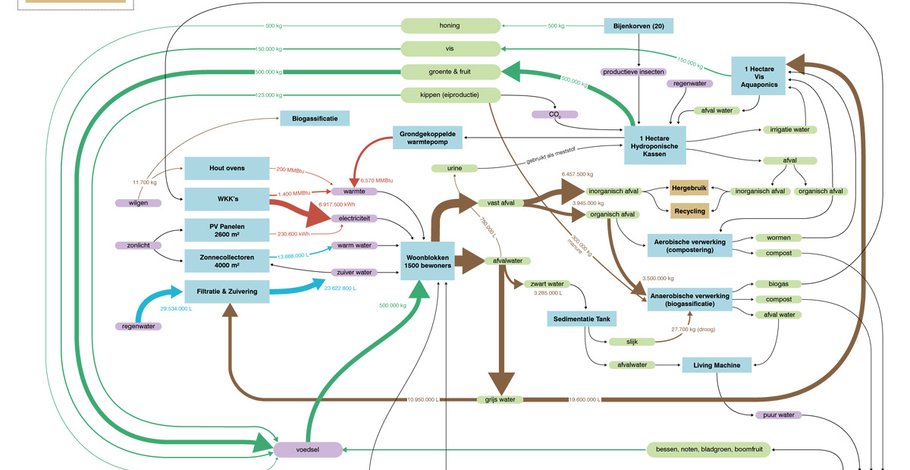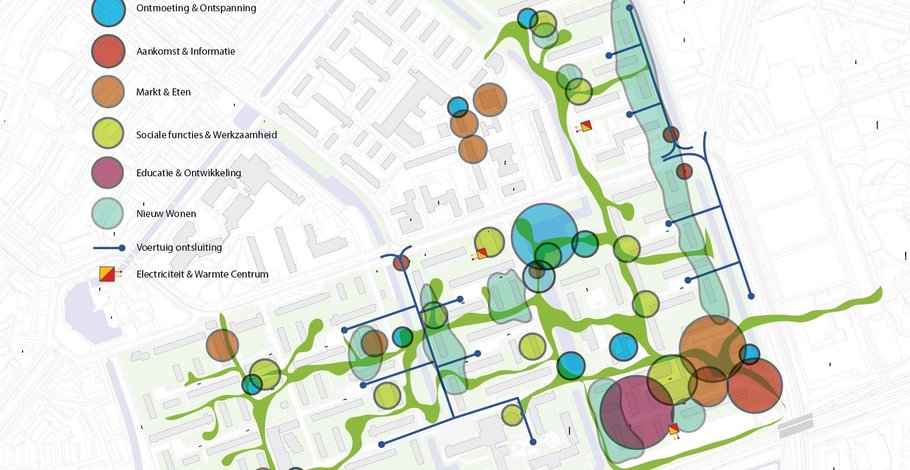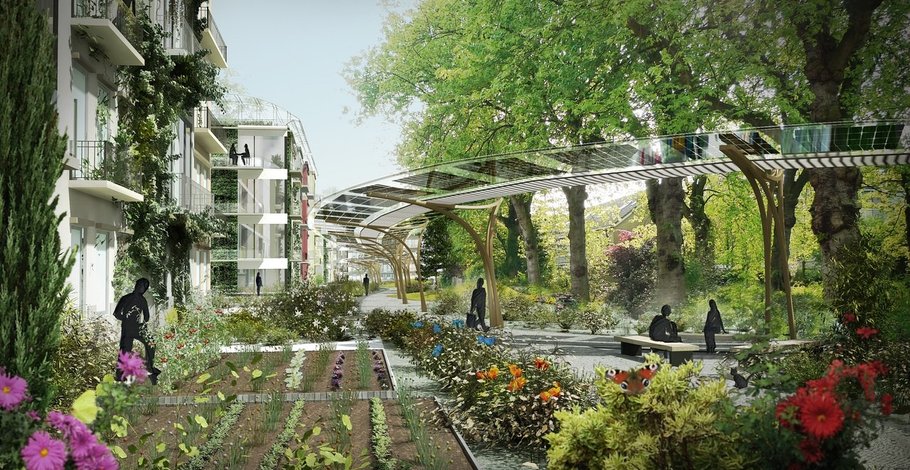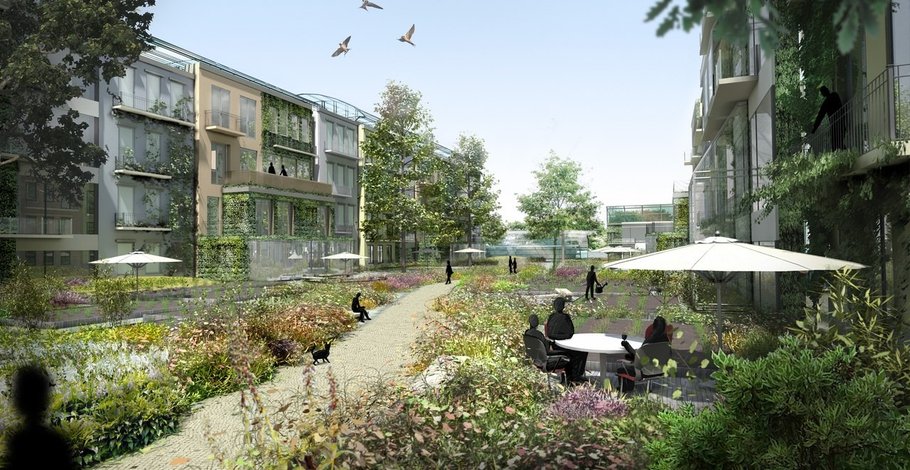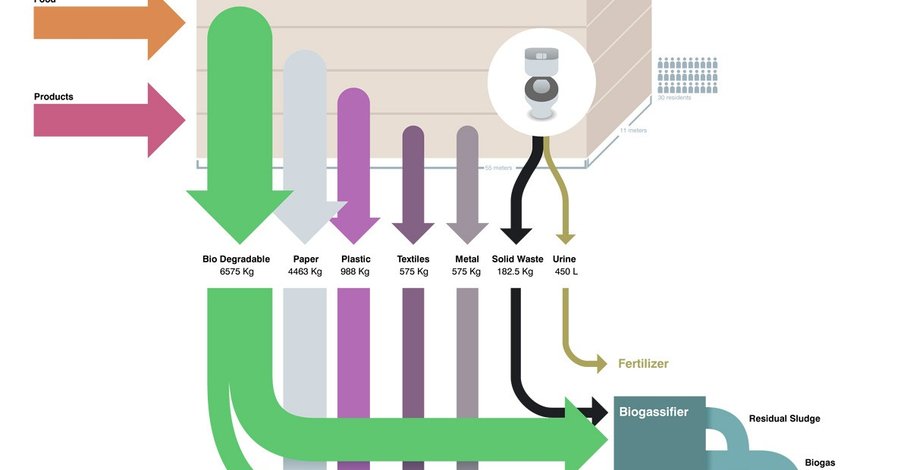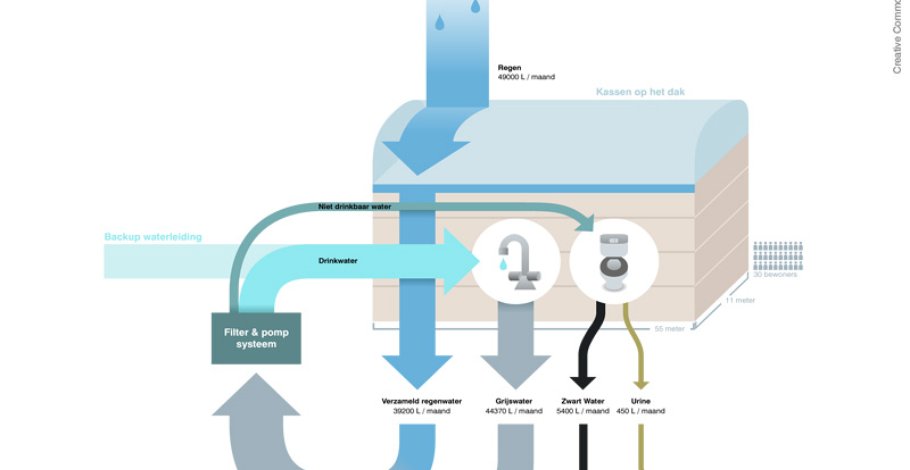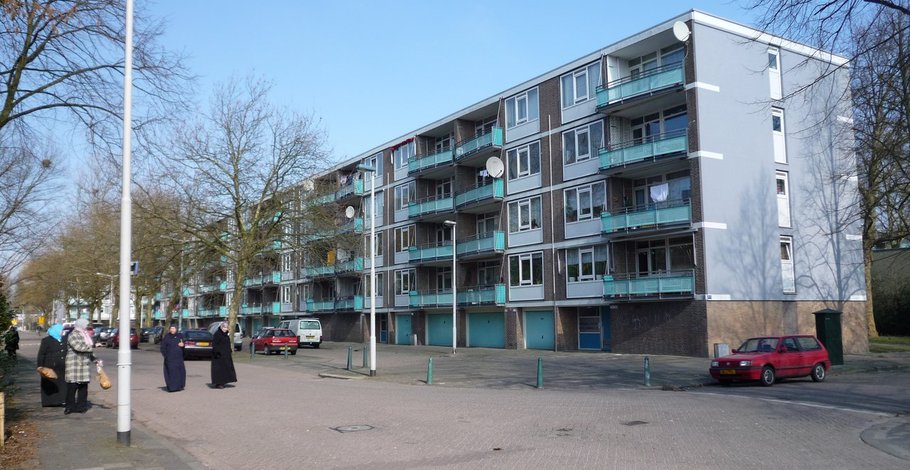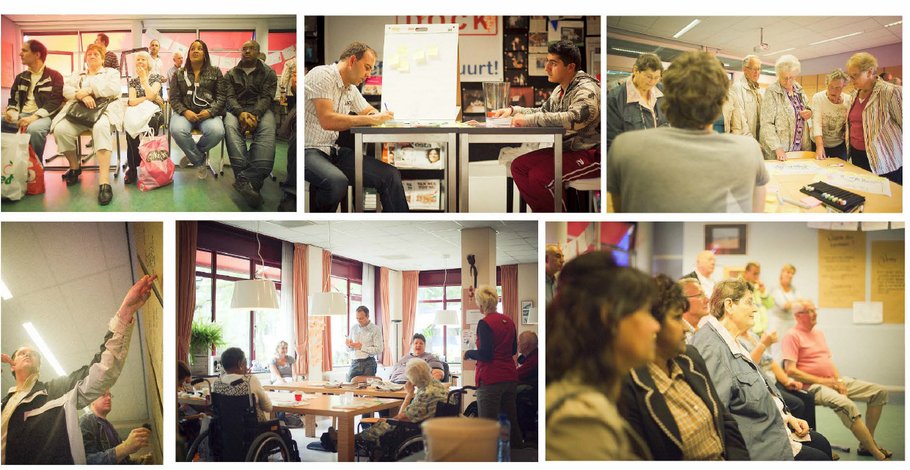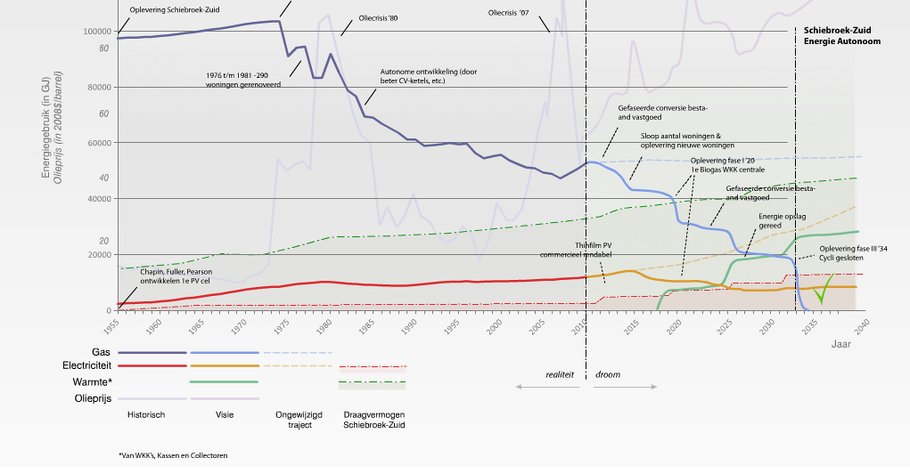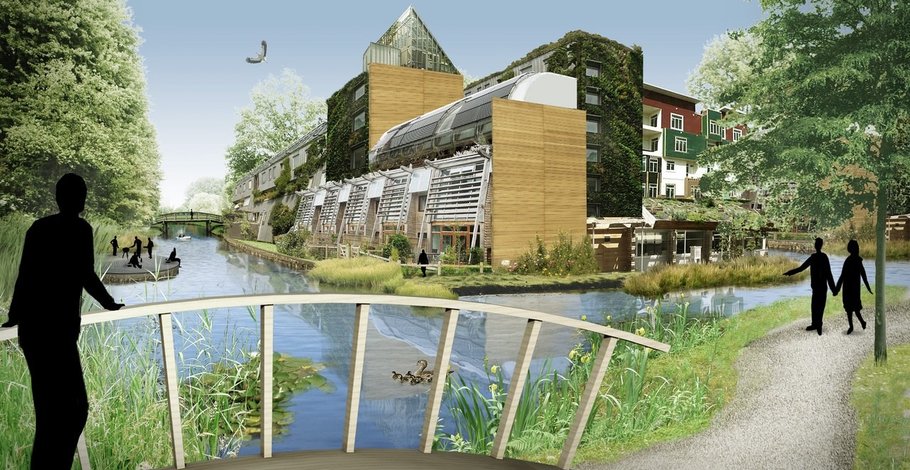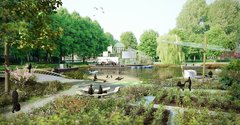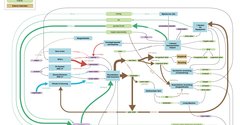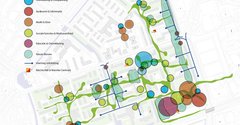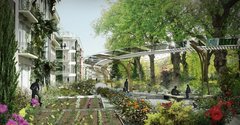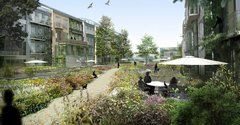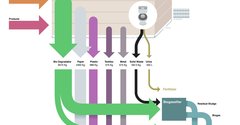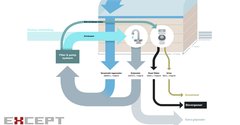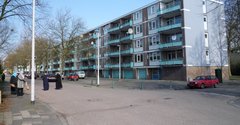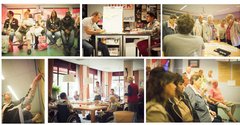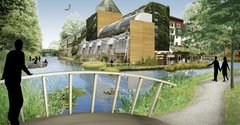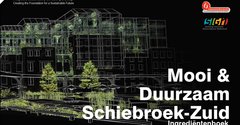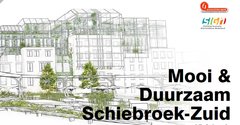
Sustainable Schiebroek-Zuid
Project > Redevelopment of post-war social housing
We developed a sustainabile conversion and development plan for the post-war social housing area Schiebroek-Zuid in Rotterdam. The project provides a flexible and exemplary roadmap for converting the neighborhood into a self-sufficient and sustainable area. It applies innovative energy solutions, urban farming, social and economic programs, secondary currencies, and adaptive redevelopment strategies.
This project was commissioned by housing corporation Vestia and agricultural research network InnovatieNetwerk.
Social housing conversion
As a first of its kind, the Sustainable Schiebroek-Zuid project provides a template approach to converting a commonly problematic housing typology into a beautiful, equitable and resilient sustainable community. The neighborhood uses proven, common technologies in smart ways, in combination with 'biological engines’ to provide the neighborhood with its own water, electricity, heat, waste processing and 70% of its own food production.
Closed loop metabolism
The plan combines socio-economic programs and proven technologies to create a closed-loop urban metabolism. All energy and water are locally provided and most wastes are handled on site. Local agriculture is the “biological engine” that drives many aspects of the plan, such as energy generation, nutrition, education, recreation, social programs, and local economic activities.
Integrated Sustainability
Except drew on its integrated sustainable development approach, Symbiosis in Design (SiD), to develop an extensive set of measures, or 'ingredients’, which can be mixed and matched over time to achieve the end vision. These ingredients were designed in cooperation with stakeholders and residents. SiD facilitates and assures the integration of the many elements of sustainability in a co-operative framework.
Social and Economical Development
The ingredients include many social programs for neighborhood target groups such as the elderly, children, teenagers, immigrants, and entrepreneurs. A marketplace and community center will serve as central hubs for the new neighborhood activities. Meanwhile, flexible ateliers provide spaces for startup companies that can be used as anything from craft workshops to offices, and kitchens to storefronts. A local currency has been suggested as a way of encouraging local trade and as an incentive for energy saving or waste reduction efforts.
Resource Self-Sufficiency
Using a combination of biogas-fueled power plants, solar installations, and heat capture from rooftop greenhouses, the area can supply all of its required electricity and heat.
Edible landscaping throughout the neighborhood can make use of previously empty lawns while meaningfully connecting residents to their natural surroundings. A key feature of the plan is that it renovates instead of demolishes most of the neighborhood’s existing buildings, reducing both the social disruption and environmental impact typically caused by neighborhood renewals that begin with demolition.
Contractor Vestia will start with implementing a number of ingredients from the plan. Except hopes that this project will serve as an example for the numerous social housing areas with similar typologies worldwide.
Further information
For the Schiebroek-Zuid project a vision book was developed as well as an ingredient book. The ingredient book, counting almost 300 pages of details, calculations, examples and solutions for all categories of the project, are available in PDF form in Dutch on this page.
Media & Downloads
Downloads:
Reference Projects
Growth-Planning Area Planning & Development
Growth Planning introduces an entirely new approach to area planning and urban design. Rather than defining specific programmatic requirements, Growth Planning instead applies socio-economic impulses to the area within certain performance edge conditions. It revolutionzes the task of city design by requiring the urban fabric to organically respond to social and economic stimuli, and allows for increased value, quality, and development over time.
Born out of the necessity to start thinking differently about our built environment due to economic, social and environmental constraints, Except has worked on refining this new form of planning since 2005.

Rome Apartment Building
The Daadkracht project is the design of a four story mixed-use building in the heart of the old city of Rome, offering three spectacular apartments, shops, and a restaurant. Part of the design is a city park bordering the Tevere river, a church and various other historical buildings.
The project presented a unique opportunity to design the first new non-cultural edifice in Rome after Mussolini. To honour this event, an extensive study into the history of Rome, both its ancient past, turn of the century socio-cultural and political developments and modern developments were used as a driving force behind the design of this building.

BKCity Slim Refurbishment
BKCity is a magnificent listed monument of more than 30.000m2 functioning as the faculty of Architecture of the TU Delft. Except created a phased plan to make this historic educational building energy and carbon neutral within ten years.
The plan converts the building into a didactic tool that puts sustainability at the heart of education for generations of architects, introducing a unique in-building ecosystem that provides an inspiring environment, functional qualities and cost savings.
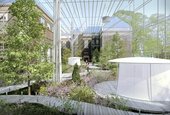
San Francisco Transbay / Salesforce Park
The San Francisco Transbay Center redevelopment project realizes the world’s largest rooftop park in the center of one of the world’s most exciting cities: Salesforce Park. The concept, developed by Except together with Pelli Clarke Pelli Architects, restructures an existing transport hub into a beacon of beauty, biodiversity, and health. The project started in 2007 and the park opened in 2019.
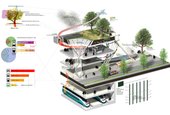
Merredin Health Industries Spirulina Plant
The Merredin Spirulina plant, developed in the year 2000, is one of the first projects in which we applied systems thinking and our holistic, systemic approach to innovation, using ecology as a main component.
The result is a highly unusual but stunningly effective business case for a sustainable, ecological industry to revive a desert town in Australia.
This project is a testament to the strength of holistic, systemic approaches. For this reason, we documented the project extensively on this page, indluing the conception process, business case and design of the plant. For more detail, feel free to contact us.
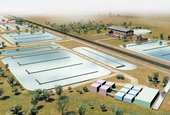
Exemplary Neighborhoods
Under the name of Excellent Areas ("Excellente Gebieden"), a number of Dutch home construction companies and municipalities are engaged in an experiment to use the building standards of 2015 and 2020, today. By the nature of these future building standards, there is much to learn for these actors before they can profitably apply them.
AgentschapNL is the facilitator of the Exemplary Neighborhoods project, and they asked us to evaluate the instruments they have set up for the learning trajectory.
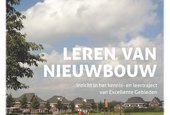
District heating vision Tilburg
This project researches a sustainable district heating system in the Dutch city of Tilburg, developed with our consortium partners.
The vision includes both ecological and social sustainability, and functions as the starting point for all parties involved to cooperate toward a sustainable and carbon neutral heat provision.
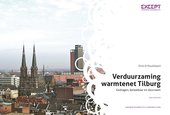
Food for the Urbanite
This research project investigates how the city dweller influences the food system. It investigates new disruptive developments, and proposes actionable steps forward to improve consumer connectivity to the food system. This improves the relation between actual demand for healthy and honest food, and the food system at large.
The research booklet is downloadable for free (in Dutch).
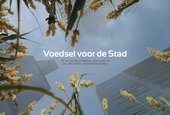
Sustainable Urban Districts - 2015 Global Review - WWF
This project arose from the joint desire of WWF and Lafarge to contribute original research to move the construction sector towards a sustainable future. We examined 11 exemplary urban districts and neighborhoods around the world from inception to inhabited, using a systemic and holistic perspective. We extracted the success and failure factors, and uncovered new strategies that accelerate sustainable development both on a project and building sector level.
The result is available in a comprehensively illustrated book, downloadable from this page, or read it online at ISSUU.
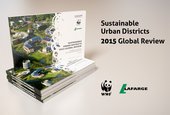
Zevenkamp through our eyes
“Zevenkamp through our eyes: a story of three students and one neighborhood” is an urban transformation project by Except Academy, a learning platform for interns at Except. We developed an inspiration book which tells the story of our journey and experiences while investigating Zevenkamp, the second largest post-war neighborhood in the Netherlands.
The purpose of the book is to inspire and share our vision of Zevenkamp’s future. It has practical examples of opportunities for the neighborhood to become flourishing and resilient with the help of its residents and stakeholders.
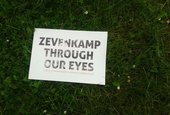
Trade mission Detroit
In cooperation with the Dutch Foreign Office we organized the trade mission to Detroit of May 2015 for over 25 organizations. The program established new permanent business partnerships of Dutch agri- and horticulture, and innovation companies with their American business, governmental and community development counterparts. Detroit, a former powerhouse of the automotive industry, has suffered from deindustrialization, a decline in population, an increase in crime, and general decay. Yet, Detroit is a city full of resources and opportunities.
The event launched Detroit Urban Regen which aims to revitalize the city using smart agricultural solutions and creating a new biobased industry. 22 written pledges of commitment where secured, adding to the existing 15 international partners for Detroit Urban Regen.

Sustainable development Catharijnesingel Utrecht
In collaboration with KWS-Infra and tender office GAIM, Except organized an innovation session for a sustainable approach to the demolition of a part of the Catharijnesingel in the center of Utrecht. The approach reponds to the sustainability goals set by the municipality of Utrecht.
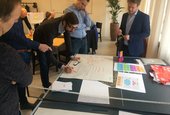
ReGen Villages Oosterwold
For ReGen Villages, we developed a globally unique masterplan for a self-sustaining housing neighborhood of 203 houses in the Netherlands. Designed on a 25 hectare site in an area called Oosterwold, just 20 minutes from Amsterdam, it exemplifies affordable, regenerative, and self sustaining living.
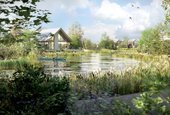
Roadmap to the BGI Manual
Blue Green Infrastructures (BGI) increase the resilience of urban and rural landscapes, integrating their core functions with natural features and processes. Hurdles exist in the process of translating BGI-related knowledge and data from science to practice, and a tool that facilitates this transfer is still missing. We conducted a research in collaboration with a team of partner organizations (JNCC, IFLA Europe, BiodivERsA, and NRW), to pinpoint key preliminary knowledge to design such a tool, and collected our key findings in a report downloadable on this page.

Contact
Tom Bosschaert
Director
 +31 10 7370215
+31 10 7370215
Client & Partners
-
Nominated for Buckminster Fuller prize!
Polydome receives acclaim. -
Cycling under water
Designing a refit for the existing IJtunnel to provide space for cyclists -
Detroit Urban Regen Launched
Dutch Agri-food and Greenhouse Technology Trade Mission to Detroit -
Grid Night - Cities Go Wild - Part II - Urban Biodiversity
A pollination of inspiration about urban biodiversity
-
Growth-Planning Area Planning & Development
Next Generation Open Source City Planning - June 2009 -
Rome Apartment Building
New Architecture in the heart of old Rome -
BKCity Slim Refurbishment
Sustainable Renovation of TUDelft's Architecture Faculty -
San Francisco Transbay / Salesforce Park
World's largest ecological rooftop park -
Merredin Health Industries Spirulina Plant
Rural Regeneration Algae plant -
Exemplary Neighborhoods
Learning from New Building Standards -
District heating vision Tilburg
Sustainable, fair, and affordable -
Food for the Urbanite
Role of urbanites in the food system -
Sustainable Urban Districts - 2015 Global Review - WWF
New strategies from 11 exemplary settlements -
Zevenkamp through our eyes
The transformation of Zevenkamp into the happiest neighborhood in Rotterdam -
Trade mission Detroit
Launch of Detroit Urban Regen -
Sustainable development Catharijnesingel Utrecht
Full spectrum sustainability strategy for urban infrastructure -
ReGen Villages Oosterwold
Masterplan for a self sustaining neighborhood -
Roadmap to the BGI Manual
Bridging the knowledge gap in the field of Blue Green Infrastructures
Team
-
Ariana Bain
Industrial and Urban Ecologist
-
Eva Gladek
Industrial Ecologist
-
Gerard Vink
Communication Strategist
-
Jacob Verhaart
Head of Science; Industrial Ecologist
-
Michiel van der Vight
Senior Associate
-
Stephanie Bartscht
CommunicationExcept Integrated Sustainability -
Hidde van der Lijn
Photography & VisualizationExcept Integrated Sustainability -
Patrick Bellew
Environmental engineeringAtelier Ten -
Han Dijk
Spatial StrategyPosad -
Stephanie Carlisle
Environmental DesignExcept Integrated Sustainability -
Bart Verhagen
Client RepresentativeEstrade / Vestia -
Peter Oei
Partner RepresentativeInnovatieNetwerk / SiGN
